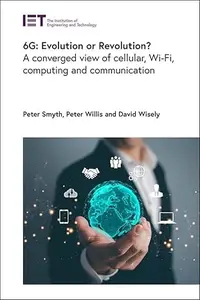
Free Download 6G: Evolution or Revolution?: A converged view of cellular, Wi-Fi, computing and communication
by Peter Smyth, Peter Willis and David Wisely
English | 2024 | ISBN: 1839538406 | 615 pages | True PDF | 39.2 MB
There are numerous potential paths toward achieving the 6G network and various factors that could define it. Written by three telecom industry experts, this book explores the opportunities and challenges surrounding the next generation of wireless communication technology. Will 6G build solely on the future evolution success of the 5G network, or will the delivery of 6G facilitate a revolution in technology and infrastructure with the convergence of fixed/mobile networks and collaboration with hyperscalers to help fund it?
The book presents a compelling vision of how 6G addresses the challenges that 5G faces for the broader digitalisation of society and industry. It defines new types of wireless communications and refines the smartphone and its use, revolutionising our digital landscape. While the introduction of mmWave phased arrays offers optical fibre-like bandwidths, many of the applications for this technology will not be telecoms-based. The authors also define a revolutionary 6G with new ideas for spectrum management, creating GHz of additional spectrum, convergence, privacy and core network infrastructure. They also review the evolution of 5G and Wi-Fi towards the end of the decade as a platform for 6G and the current worldwide 6G standards activities. Meanwhile, inside-out coverage could define how mobile networks are built.
6G: Evolution or Revolution? explores what the internet could be in 2030 and how it will influence 6G, particularly its intelligence layers. It covers the internet and the mobile core network and how these will change for the age of machines, with Wi-Fi and mmWave communications, AI, and the new uses of the smartphone.
This book provides an informative and thought-provoking perspective for researchers, strategists, regulators, scientists, engineers, technology professionals, and academia interested in the future of communications technology.
